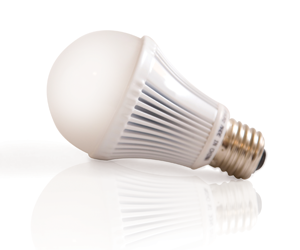On December 19, 2007, President George Bush signed into law the Energy Independence and Security Act (EISA) that changed the landscape for common incandescent lamps (Incandescent Lamp Phase Out) and the people who use them. The comprehensive EISA includes increased fuel efficiency standards for new automobile fleets (to 35 mpg by 2020), updated efficiency standards for electric motors, and requirements for federal agencies to reduce their energy consumption by 30% by 2015.
Incandescent Lamp Phase Out
The biggest documented energy saver in EISA, however, is the set of standards for common incandescent light bulbs requiring them to use about 25% to 30% less energy than today’s lamps—and at least 60% less energy by 2020. Specifically, EISA mandates a phase out of the least efficient general service incandescent lamps through a combination of wattage caps and minimum efficiency performance standards. These phase outs begin January 1, 2012 (referring to date of manufacture) for lamps with higher lumens and wattage, and they progress until 2014.
A 2007 federal law calls for manufacturers to cease making these products beginning January 1, 2012.
What Are The Regulations?
When interpreting product legislation and regulations, it is critical to understand how the government defines a particular regulated product. In other words, if a product doesn’t fit the definition, it isn’t regulated. In EISA, a general service incandescent lamp is very specifically defined:
It has a filament (which means both incandescent and halogen versions are covered by the law).
It has a medium screw base.
If it is clear, inside frosted, or soft white, it produces between 310 and 2600 lumens.
It is an A shape; it is a G (globe shape) less than or equal to 5″ in diameter and greater than 40 watts; or it is a B, S, F, CA, or BA shape greater than 40 watts.
It is line voltage capable of operating between 110 and 130 volts.
Just as important is to know what this regulated lamp is not; for example, it is not a three-way lamp; it is not a low voltage lamp; it is not a colored lamp (red or blue for example); it is not 150 watts; and it is not a rough service, appliance, or vibration service lamp.
One more thing: the EISA standards for general service incandescent lamps do not apply to compact fluorescent or LED replacement lamps. The law presumes those technologies will be suitable energy efficient replacements for less efficient incandescent (or halogen) lamps,
What Does This Mean For Purchasing? 
Facility managers (fms) who are using general service incandescent lamps in their buildings already know there are more energy efficient replacements on the market. But, beginning in 2012, decisions about alternatives will be front and center. Fms will need to be keenly aware of the choices available to them and should know how each choice can be expected to perform.
Here are a few tips for successfully navigating the transition from general service incandescent lamps.
Lumens. More than ever, it will be important to know that light output is not measured in watts; it is measured in lumens. For a given lumen output desired for an application, the fewer watts one can find to deliver those lumens, the more efficacious the lamps will be and the more energy that will be saved—provided fms install controls to limit use appropriately.
Technology Options
a. Halogen. As a kind of “souped up” incandescent, halogen replacement lamps are about 25% more efficient than standard incandescent and are easily dimmable. Rated life ranges from slightly longer to three times longer.
b. Compact fluorescent (CFL). This type of lamp provides about three to four times the efficiency of an incandescent. There are dimmable versions, but fms should ask the lamp manufacturer for a list of compatible dimmers. CFLs contain a small amount of mercury to ensure efficient operation, so in many states they are subject to proper disposal regulations at end of life.
c. Light emitting diode (LED). These solid-state products provide three to four times the efficiency of an incandescent lamp and a far longer life. There are dimmable versions, but like CFLs, it is important to obtain a list of compatible dimmers from the LED lamp manufacturer (see sidebar for more on LED lighting).
Incandescent lighting is undergoing a major transformation. Fms who identify their various options now will be prepared well in advance of regulatory deadlines.
By Pamela Horner. Read the entire article
Act Now! Replace your dull and inefficient fluorescent lamps with energy efficient LED replacement lamps for both new and retrofit construction.Call Steve at 661.305.3332 or email “The Next Generation Lighting Expert” at steve@lightbulbsunlimited.org
Filed under: Lighting Resources







